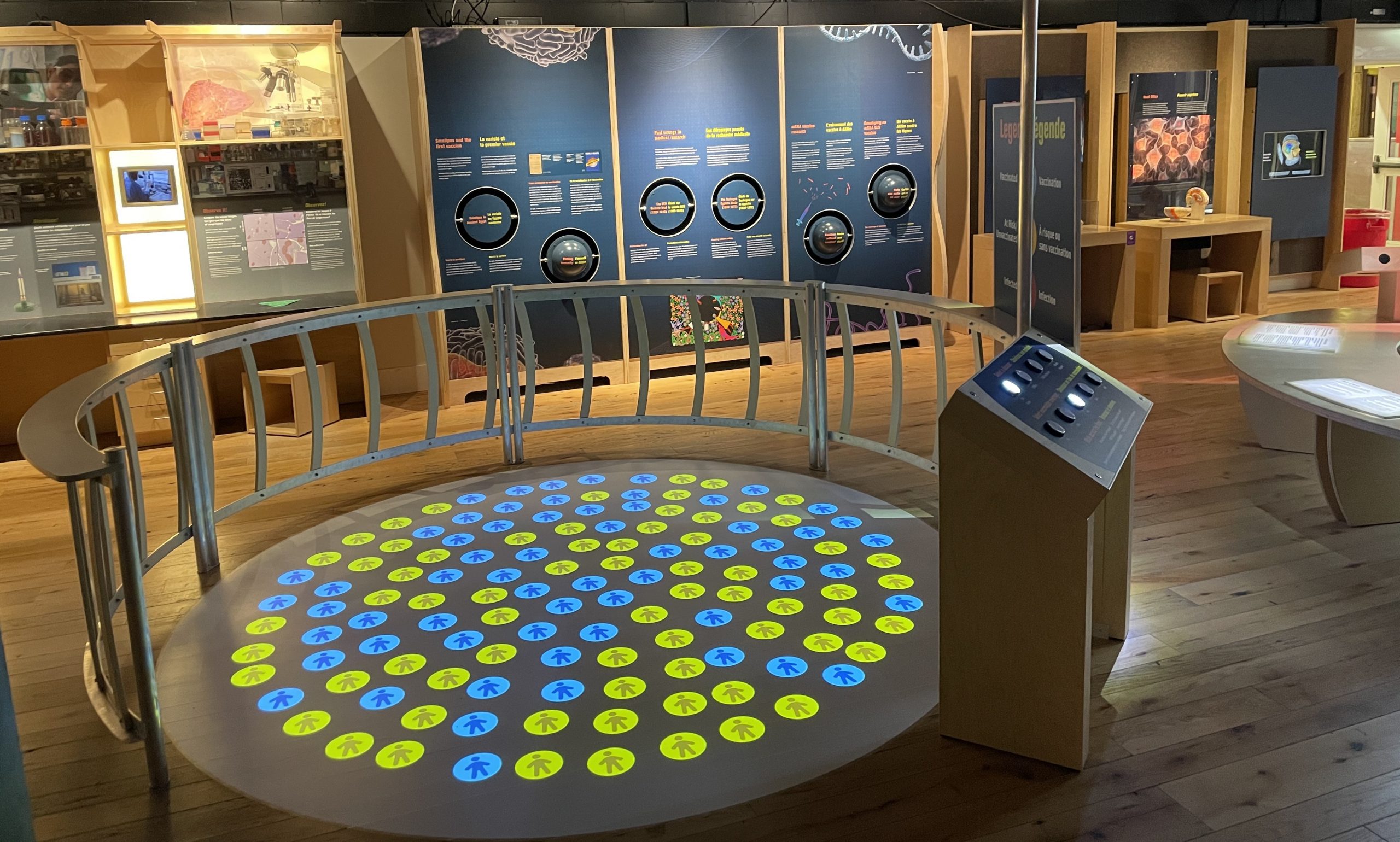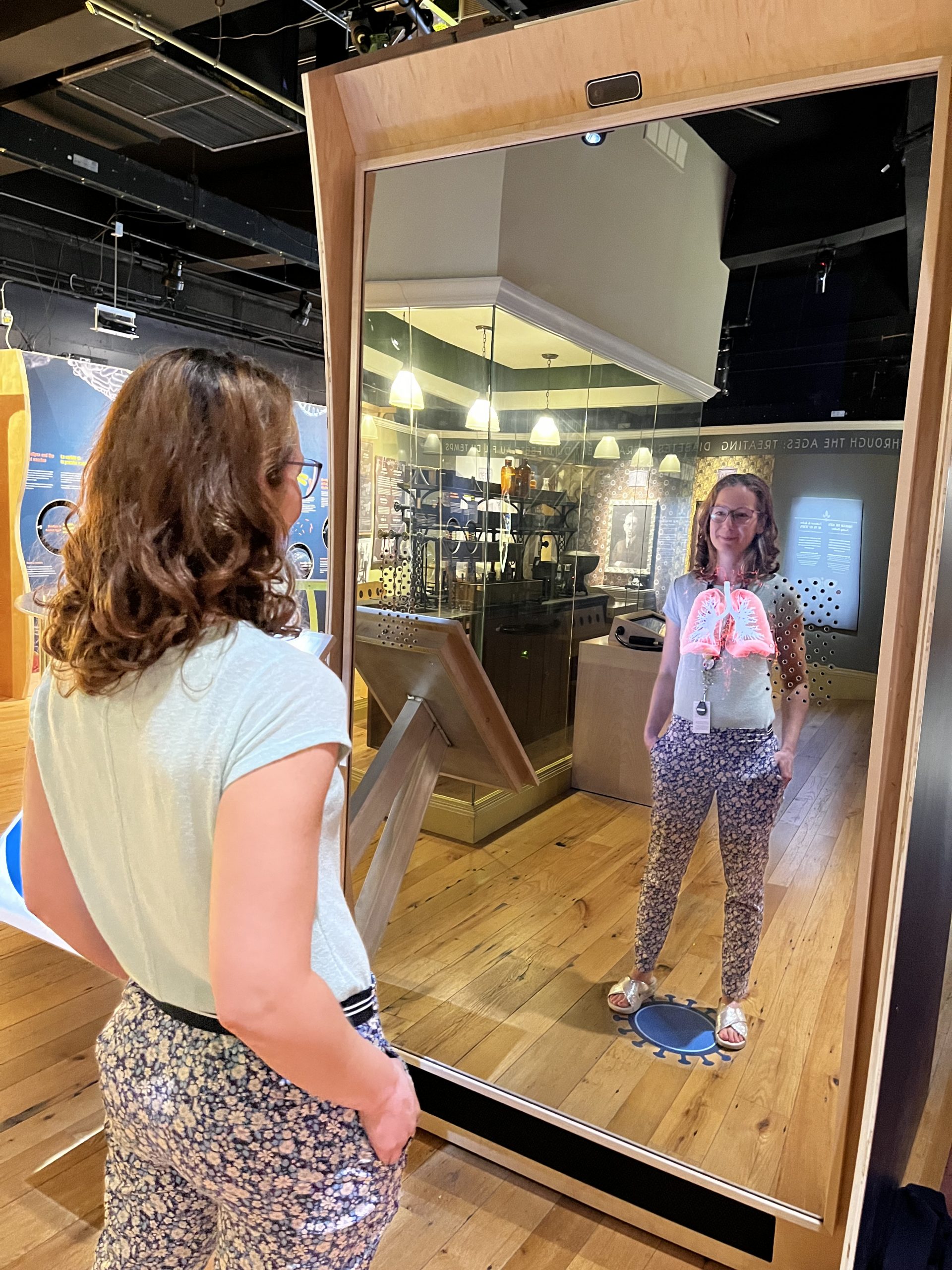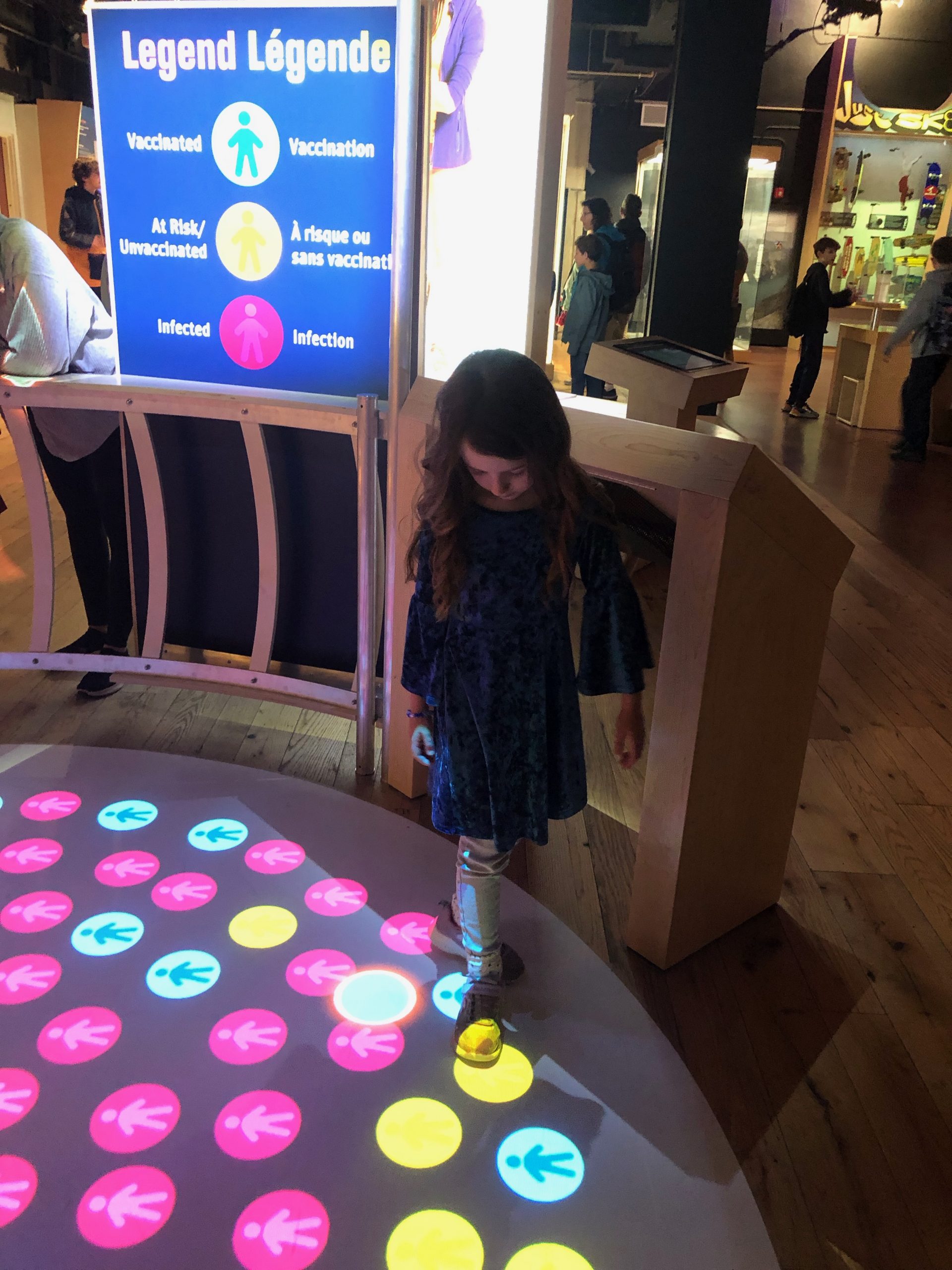U of T Experts Help Ontario Science Centre Bring Vaccine Science to Life
July 10/2023
By Ishani Nath
“Fun” is not a word people typically associate with vaccines. The Ontario Science Centre wants to change that with new exhibits that invite visitors to see, touch, and — at times — walk through vaccine science.
“We don’t want to just tell people [about vaccine science], we want them to experience it, we want them to discover it, we want to spark their curiosity, we want them to ask questions,” says Ontario Science Centre researcher and programmer Raluca Ellis, a University of Toronto alum.
The exhibits, which opened in April and will be in place for at least five years, encourage visitors to explore a topic that has dominated headlines for the past three years but has also been muddled by disinformation. Ellis and her team worked with around dozens of experts — including members of Centre for Vaccine Preventable Diseases (CVPD) at the Dalla Lana School of Public Health — to develop the interactive stations that explore key questions about vaccines.

New vaccine exhibits at the Ontario Science Centre
“Although vaccines have gotten more airtime lately than they had previously, opinions about vaccines are also quite polarized — maybe even more polarized than they were before,” says CVPD director Prof. Shelly Bolotin. She emphasizes that having an exhibit on vaccines prominently displayed at the Ontario Science Centre shows their significance and helps make vaccine information more accessible to a variety of audiences, from parents and educators to young children.
The Ontario Science Centre welcomes an estimated one million visitors every year, including more than 165,000 Ontario students. Approximately 13 percent of the Centre’s visitors are from outside of Canada.
“There’s an opportunity here to educate children who are at a formative point in their lives about immunization and why immunization is important, and how immunization works,” says Bolotin.

Raluca Ellis demonstrating one of the vaccine exhibits at the Ontario Science Centre
The three vaccine exhibits are located in the Ontario Science Centre’s Human Edge hall alongside displays about other groundbreaking medical advancements like insulin and prosthetics. One area, developed in consultation with experts including U of T professor of Immunology and CVPD Advisory Committee member Prof. Tania Watts, looks at the body’s immune system. Here, guests step up to a special mirror that projects lungs and the lymphatic system onto their reflection. Visitors can then watch what happens when the body encounters an influenza virus with or without a vaccine.
Another area invites guests to step into the concept of community immunity and how quickly infections spread based on different vaccination coverage. The exhibit projects dozens of circles onto the ground, representing people who are either vaccinated (blue circle), at-risk or unvaccinated (yellow circle), or infected (pink circle). On an accompanying control panel, visitors select a vaccine preventable disease like influenza, COVID-19 or measles, and the percent of the population that has been vaccinated against that disease, also known as vaccine coverage, ranging from 0 percent to 95 percent.
Each scenario is based on models of how infectious various diseases are (a metric known as the R-naught or R0 value) — information that was confirmed by Bolotin and the CVPD’s former operational director Prof. Shaza Fadel. After the selections are made, visitors walk across the floor to see how many dots turn pink, indicating an infection. For instance, selecting measles, the most contagious vaccine preventable disease, and a population that has no measles immunity, causes all the dots to turn pink almost immediately as someone walks across the floor, demonstrating how quickly measles can spread without protection.

The community immunity exhibit the Ontario Science Centre (Photo courtesy of Raluca Ellis)
Elementary school teacher Joanne Wilson took her class to the Ontario Science Centre and watched as her third and fourth graders explored the different community immunity scenarios.
“As an educator, I could see the students getting really concerned at how many pink circles there were and how difficult it was for them to stay ‘safe’ on the blue circles,” says Wilson. Over the past few years, she’s fielded questions about vaccines from her students, some with strong views against vaccinations due to family influence. She notes that the new exhibits can help students understand the protection offered by vaccines. “I could see how it can change someone’s perspective on getting vaccinated rather quickly,” she says.
The third exhibit outlines the history of vaccines, ethics in vaccine research, and the future of vaccines. This area, developed with the help of U of T medical and public health historian Prof. Christopher Rutty, includes information on Oneismus, the enslaved African man who was instrumental in the eradication of smallpox, the unethical Tuskegee syphilis study, and details on mRNA vaccine research. “The content on the back wall celebrates past accomplishments but also acknowledges that there have been mistreatments in medical research,” explains Ellis, adding that the panels look towards a future for vaccines and vaccine research that includes “cultural safety and protection for all.”
While vaccines are rapidly advancing, the information presented at the Ontario Science Centre outlines the unchanging basics that can help people of all ages and backgrounds better understand vaccine science.
“Talking about vaccines doesn’t have to be a scary topic,” says Ellis. “We can approach it in a way that is fun and playful, and we can approach it with a sense of curiosity… People have questions, it’s totally natural, and hopefully we can help answer some of them.”